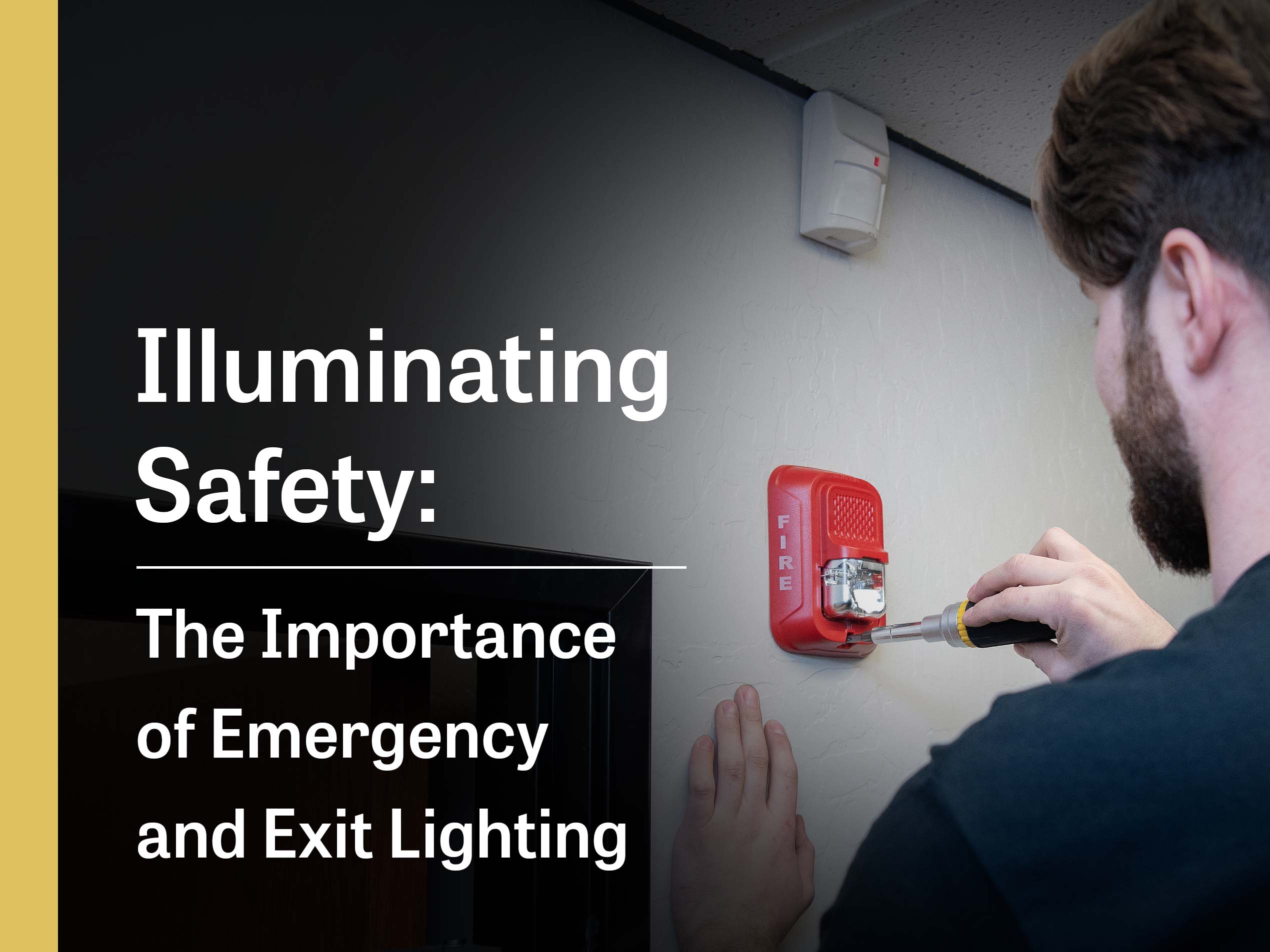
Emergency and exit lighting are vital lifelines in hazardous situations, especially when visibility is limited due to smoke or darkness. These systems ensure safe and efficient evacuation by:
- Preventing and reducing panic
- Increasing the visibility of exits
- Providing clear and illuminated pathways during a power outage
- Expediting evacuation by aiding first responders
As a building owner or property manager, it falls upon you to ensure that your emergency and exit lighting systems are current, well-maintained, and in compliance. Numerous federal, state, and local regulations are in place to guarantee the safety of commercial buildings. Beyond the critical aspect of safeguarding lives, there are financial implications to consider for non-compliance, making it imperative for property owners to prioritize the upkeep of these systems.
The NFPA 101 Life Safety Code is a widely recognized code by the National Fire Protection Association that establishes minimum fire safety requirements for buildings. It requires emergency lighting to be provided in designated stairs, aisles, corridors, and passageways leading to an exit. NFPA 101 also requires egress signage to be provided in most buildings on exits other than main exterior doors that are not obvious and identifiable as exits. These markings need to be visible from any direction of the exit access and are required to be internally or externally illuminated.
There are several illumination requirements to keep in mind which include:
- Emergency lights must stay illuminated for at least 90 minutes after loss of power.
- The transfer of emergency lighting must be automatic and happen within 10 seconds of loss of power.
- Initial illumination must provide an average of 1 footcandle (10.8 lux).
- Illumination at any point along the path of the egress at floor level must provide at least 0.1 footcandle (1.1 lux).
- A maximum-to-minimum illumination uniformity ratio of 40 to 1 shall not be exceeded to minimize dark-to-bright spots.
Other requirements include:
- Maintenance: Emergency and exit lights must be maintained and tested regularly to ensure they are in good working condition.
- Testing: Written records of tests and the accompanying inspections must be kept as proof of maintenance.
- Inspections: Inspections are required every 30 days for 30 seconds and annually for 90 minutes.
- Emergency Signage: In addition to emergency lighting, several types of signage are required such as mandatory notices, fire action or instruction signs, escape route signs, emergency and exit door signs, hazardous materials signs, safe conditions signs, and more.
It is important to remember that code requirements establish minimum standards and should be viewed as a baseline when designing emergency lighting systems. Facilities such as hospitals, schools, nursing homes, and manufacturing areas often benefit from supplementary lighting beyond these minimums.
Contact an expert:
Keeping track of the ever-changing codes and ordinances can be overwhelming. It’s our job at Summit Fire Protection to stay up-to-date all on the latest regulations and provide thorough inspections.
Contact the Summit Fire Protection branch in your area to schedule an inspection and speak with one of our fire protection experts today. Rest assured with confidence that you are in compliance and ready for any emergency that may arise.

